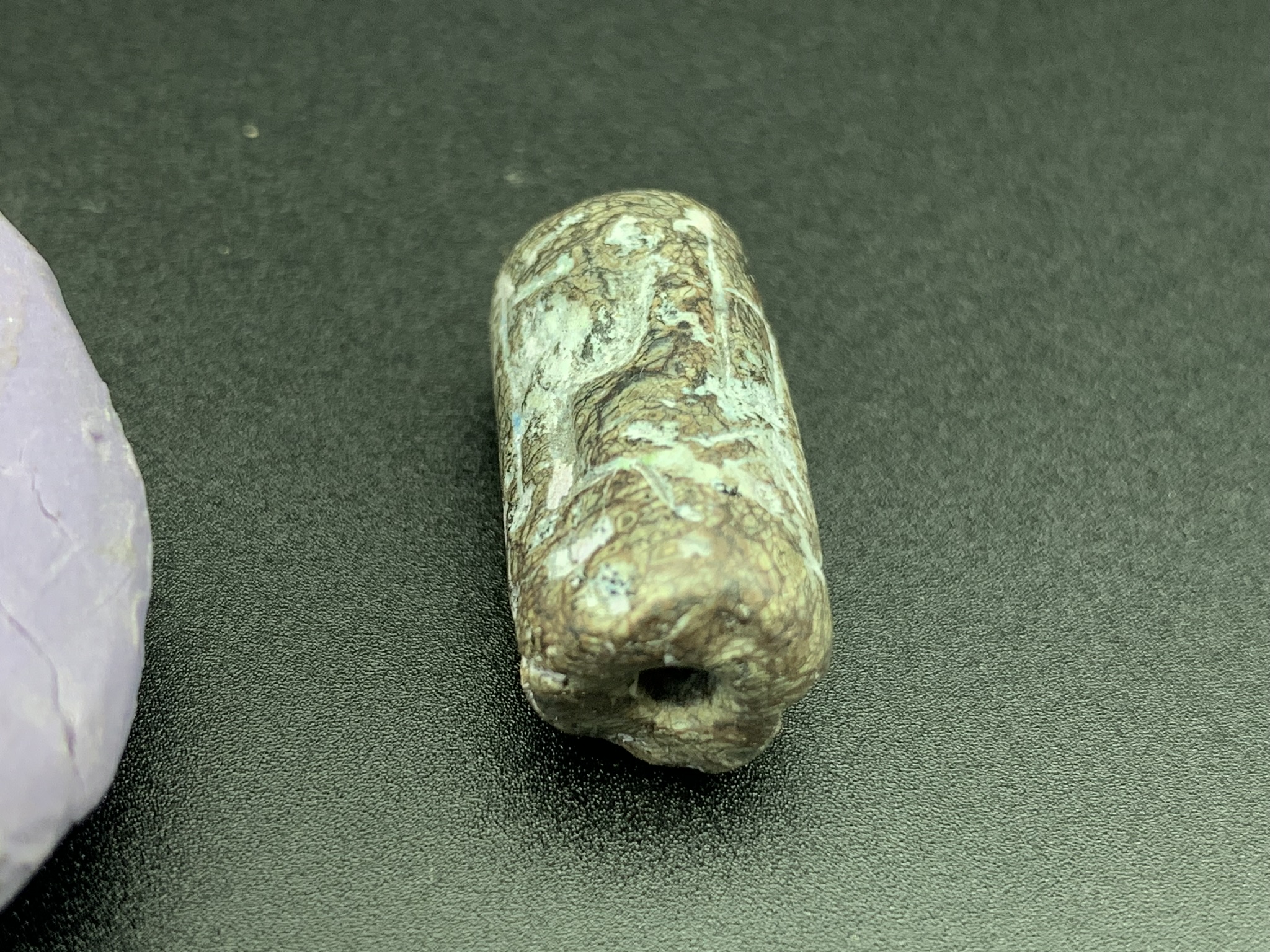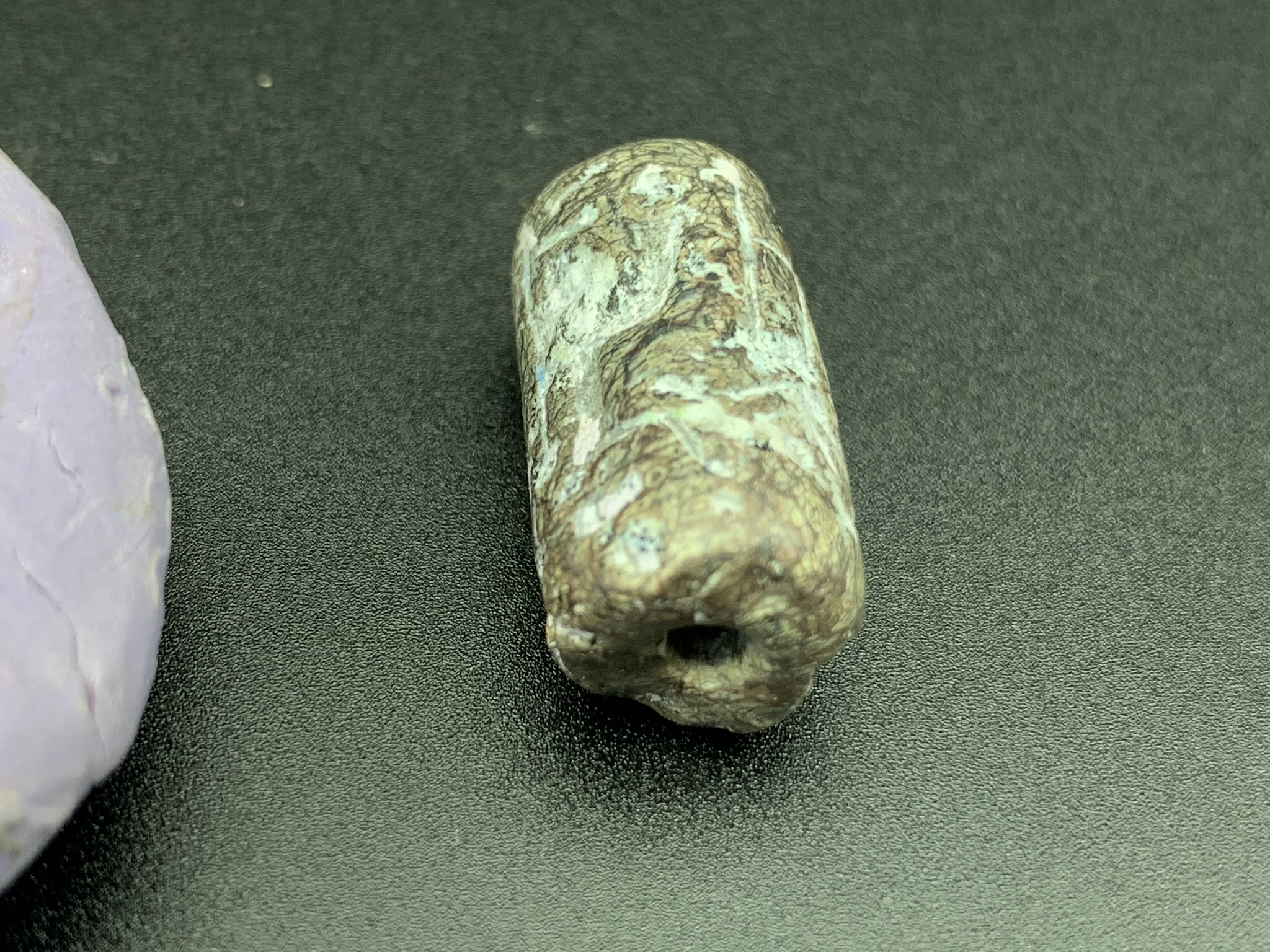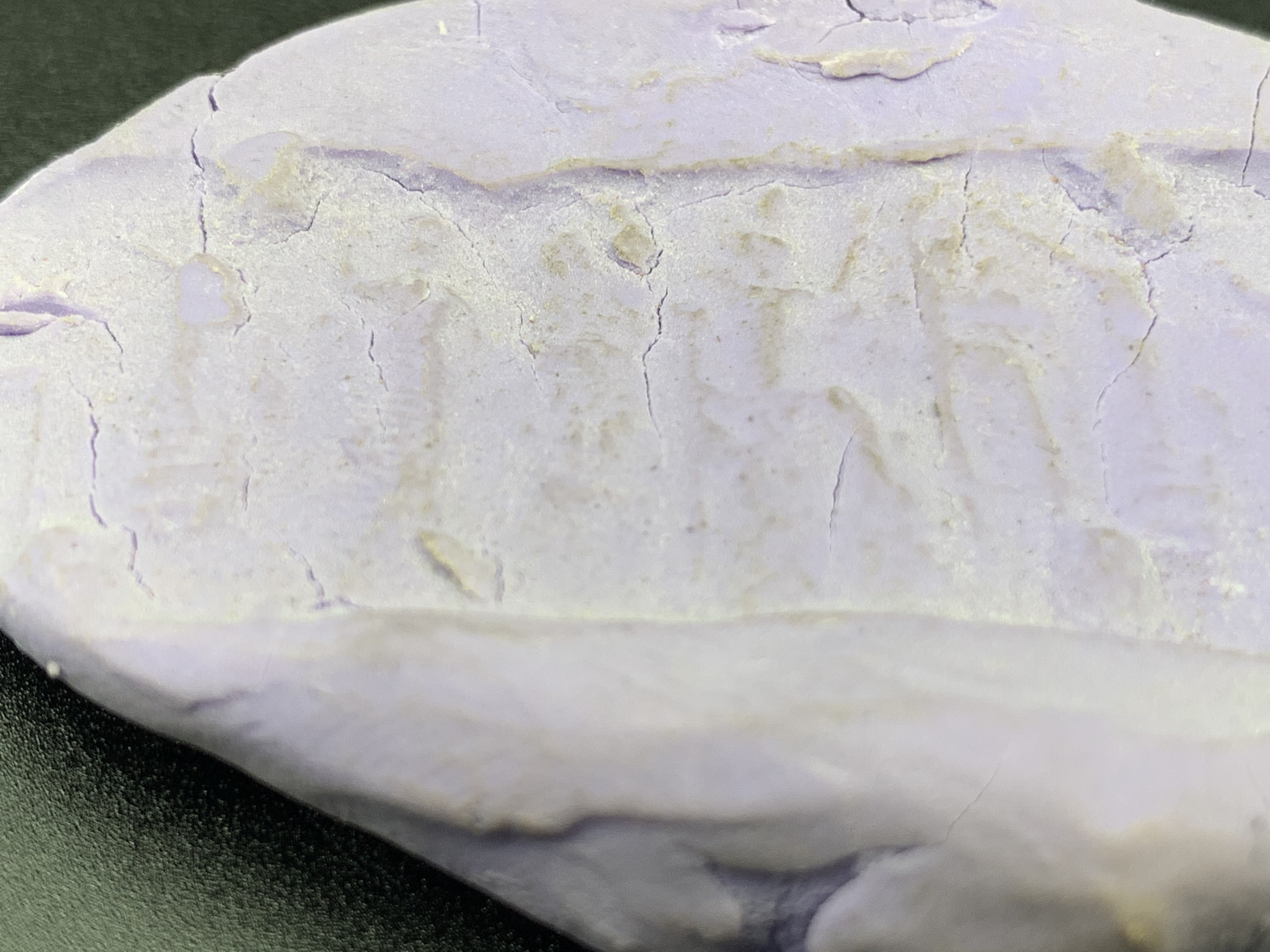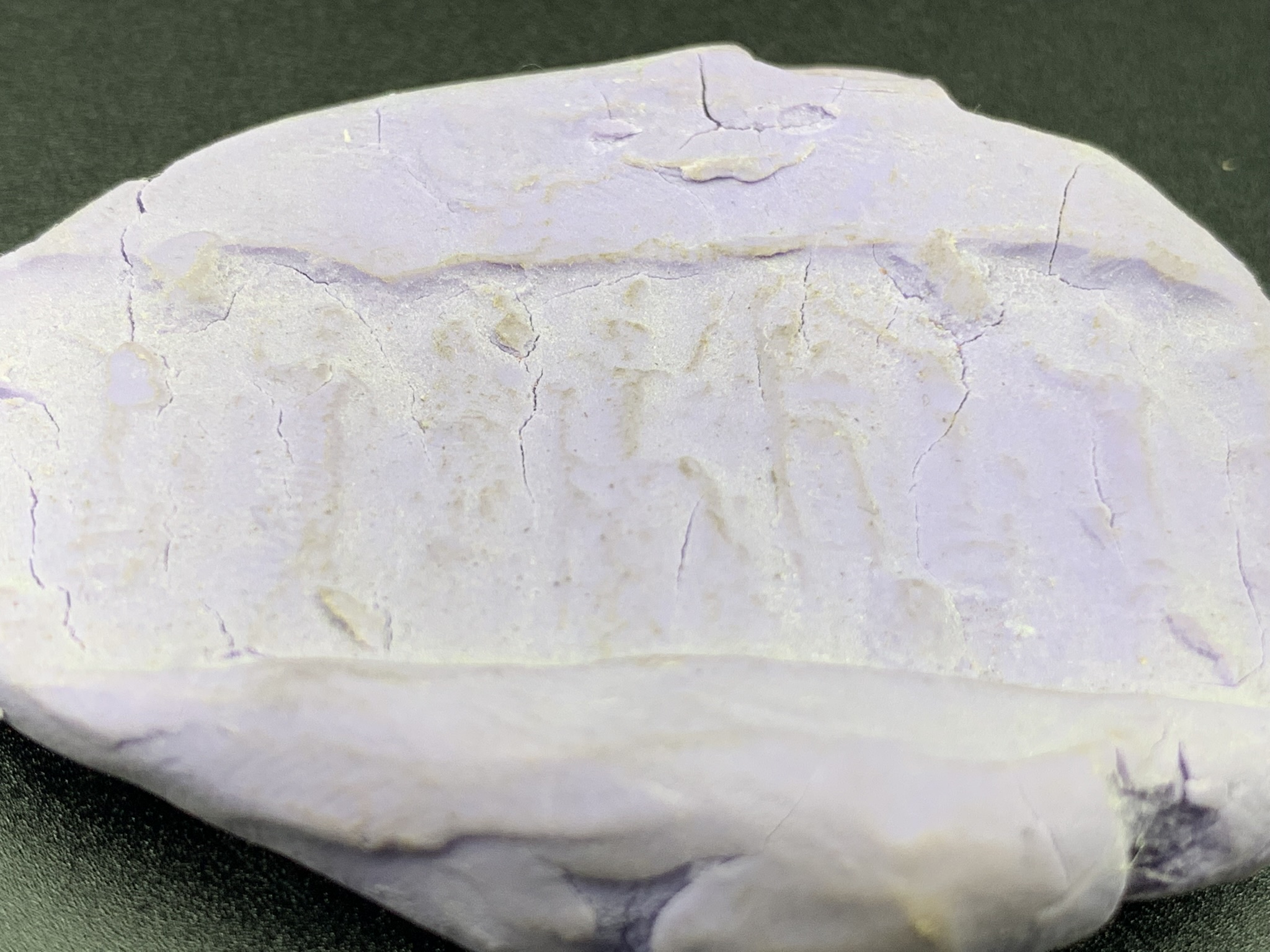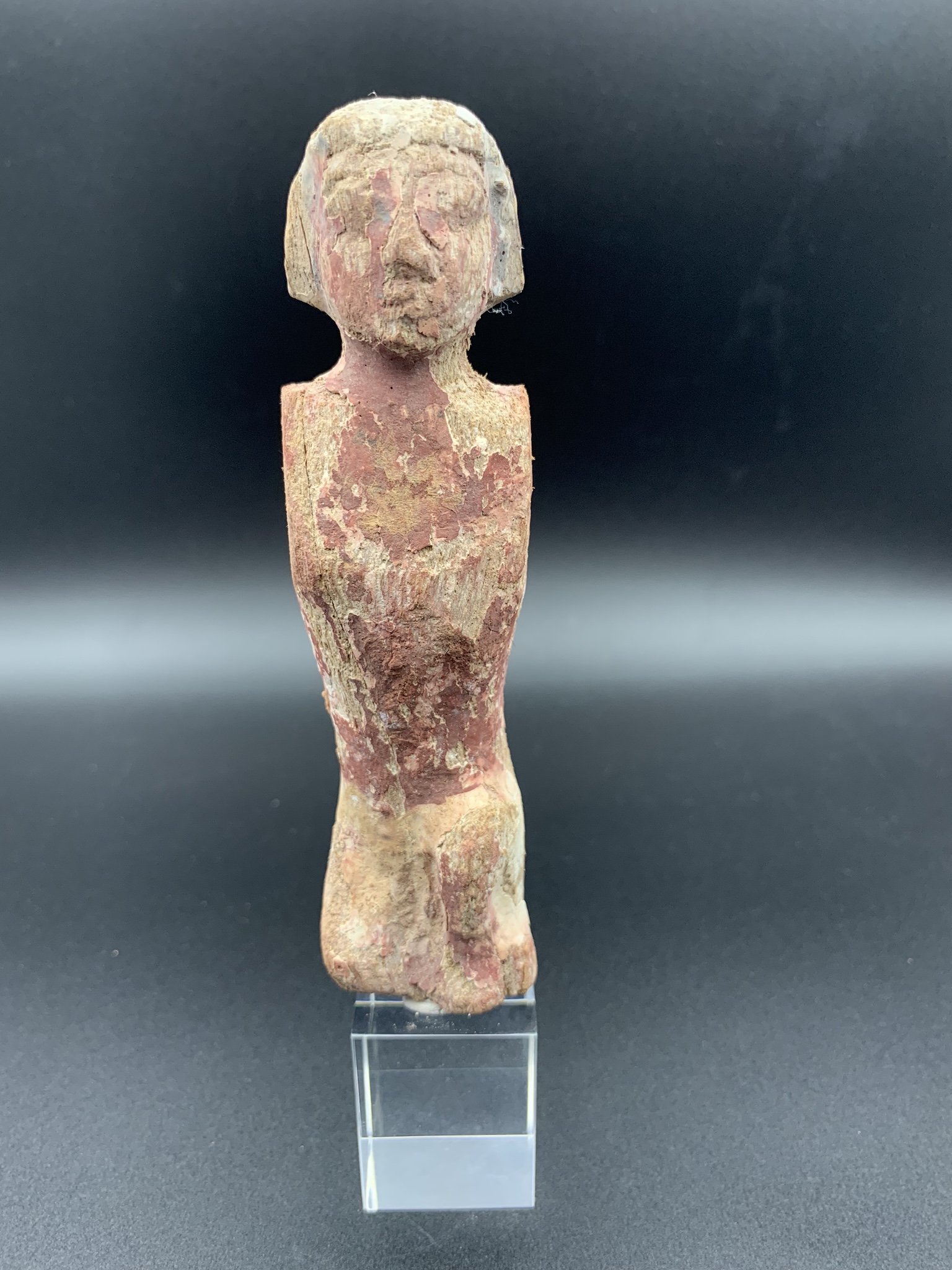Antic segell cilíndric Babilònic 2.000 a.c.
€121,00
Antic segell cilíndric Babilònic 2.000 a.c.
- Procedència: Babilònia
- Època: 2000 a.c.
- Tamany: 2.2 cm
- Material: Pedra negre
- Estat: Bo
- Comprat a: Ebay
- Venedor: arethvsa antichita (bjserstr566)
- Preu: 121,00$
- Certificat d’autenticitat: Sí
- Data: 03-gen-2015
Codi: WAS-00004
Antic segell cilíndric Babilònic 2.000 a.c.
- Procedència: Babilònia
- Època: 2000 a.c.
- Tamany: 2.2 cm
- Material: Pedra negre
- Estat: Bo
- Comprat a: Ebay
- Venedor: arethvsa antichita (bjserstr566)
- Preu: 121,00$
- Certificat d’autenticitat: Sí
- Data: 03-gen-2015
Descripció detallada
Vell segell cilíndric babilònic. Al voltant del 2000 a.c.
Aquest segell representa a Lahar, déu del bestiar que fa una ofrena al déu suprem Enki, que el va crear en la cambra de la creació. Lahar podria ser la font del nostre Abel en la nostra Bíblia.
Mesura aproximadament 22 mm.
Més informació
EA/ENKI
Ea, (Akkadian), Sumerian Enki, Mesopotamian god of water and a member of the triad of deities completed by Anu (Sumerian: An) and Enlil. From a local deity worshiped in the city of Eridu, Ea evolved into a major god, Lord of Apsu (also spelled Abzu), the fresh waters beneath the earth (although Enki means literally “lord of the earth”). In the Sumerian myth “Enki and the World Order,” Enki is said to have fixed national boundaries and assigned gods their roles. According to another Sumerian myth Enki is the creator, having devised men as slaves to the gods. In his original form, as Enki, he was associated with semen and amniotic fluid, and therefore with fertility. He was commonly represented as a half-goat, half-fish creature, from which the modern astrological figure for Capricorn is derived.
Ea, the Akkadian counterpart of Enki, was the god of ritual purification: ritual cleansing waters were called “Ea’s water.” Ea governed the arts of sorcery and incantation. In some stories he was also the form-giving god, and thus the patron of craftsmen and artists; he was known as the bearer of culture. In his role as adviser to the king, Ea was a wise god although not a forceful one. In Akkadian myth, as Ea’s character evolves, he appears frequently as a clever mediator who could be devious and cunning. He is also significant in Akkadian mythology as the father of Marduk, the national god of Babylonia.
LAHAR
Lahar was the Sumerian cattle-god or goddess sent by Enlil and Enki from the sky down to earth in order to make abundant its cattle. He is the brother of Ashnan. Lahar, along with his sister, was created in the creation chamber of the gods so the Anunnaki might have food and clothes.
BABYLONIA
Babylonia, ancient cultural region occupying southeastern Mesopotamia between the Tigris and Euphrates rivers (modern southern Iraq from around Baghdad to the Persian Gulf). Because the city of Babylon was the capital of this area for so many centuries, the term Babylonia has come to refer to the entire culture that developed in the area from the time it was first settled, about 4000 bce. Before Babylon’s rise to political prominence (c. 1850 bce), however, the area was divided into two countries: Sumer in the southeast and Akkad in the northwest.
A brief treatment of Babylonia follows. For full treatment, see Mesopotamia, history of.
The history of Sumer and Akkad is one of constant warfare. The Sumerian city-states fought one another for the control of the region and rendered it vulnerable to invasion from Akkad and from its neighbour to the east, Elam. Despite the series of political crises that marked their history, however, Sumer and Akkad developed rich cultures. The Sumerians were responsible for the first system of writing, cuneiform; the earliest known codes of law; the development of the city-state; the invention of the potter’s wheel, the sailboat, and the seed plow; and the creation of literary, musical, and architectural forms that influenced all of Western civilization.
This cultural heritage was adopted by the Sumerians’ and Akkadians’ successors, the Amorites, a western Semitic tribe that had conquered all of Mesopotamia by about 1900 bce. Under the rule of the Amorites, which lasted until about 1600 bce, Babylon became the political and commercial centre of the Tigris-Euphrates area, and Babylonia became a great empire, encompassing all of southern Mesopotamia and part of Assyria to the north. The ruler largely responsible for this rise to power was Hammurabi (c. 1792–1750 bce), the sixth king of the 1st dynasty of Babylon, who forged coalitions between the separate city-states, promoted science and scholarship, and promulgated his famous code of law
After Hammurabi’s death, the Babylonian empire declined until 1595 bce, when the Hittite invader Mursil I unseated the Babylonian king Samsuditana, allowing the Kassites from the mountains east of Babylonia to assume power and establish a dynasty that lasted 400 years.
During the last few centuries of Kassite rule, religion and literature flourished in Babylonia, the most important literary work of the period being the Enuma Elish, the Babylonian epic of creation. During this same time, however, Assyria broke away from Babylonian control and developed as an independent empire, threatening the Kassite dynasty in Babylonia and on a few occasions temporarily gaining control. Elam, too, grew powerful and ultimately conquered most of Babylonia, felling the Kassite dynasty (c. 1157 bce).
In a series of wars, a new line of Babylonian kings, the 2nd dynasty of the city of Isin, was established. Its most outstanding member, Nebuchadrezzar I (reigned 1119–1098 bce), defeated Elam and successfully fought off Assyrian advances for some years.
For several centuries following Nebuchadrezzar I’s rule, a three-way struggle developed among the Assyrians and Aramean and Chaldean tribesmen for control of Babylonia. From the 9th century to the fall of the Assyrian empire in the late 7th century bce, Assyrian kings most frequently ruled over Babylonia, often appointing sub-kings to administer the government. The last ruling Assyrian king was Ashurbanipal, who fought a civil war against his brother, the sub-king in Babylon, devastating the city and its population.
Upon Ashurbanipal’s death, a Chaldean leader, Nabopolassar, made Babylon his capital and instituted the last and greatest period of Babylonian supremacy. His son Nebuchadrezzar II (reigned 605–562 bce) conquered Syria and Palestine; he is best remembered for the destruction of Judah and Jerusalem in 587 bce and for the ensuing Babylonian captivity of the Jews. He also revitalized Babylon, constructing the wondrous hanging gardens and rebuilding the Temple of Marduk and its accompanying ziggurat.
The Persians, under Cyrus the Great, captured Babylonia from Nebuchadrezzar’s last successor Nabonidus in 539 bce. Thereafter, Babylonia ceased to be independent, passing eventually in 331 bce to Alexander the Great, who planned to make Babylon the capital of his empire and who died in Nebuchadrezzar’s palace. After Alexander’s death, however, the Seleucids eventually abandoned Babylon, bringing an end to one of the greatest empires in history.


